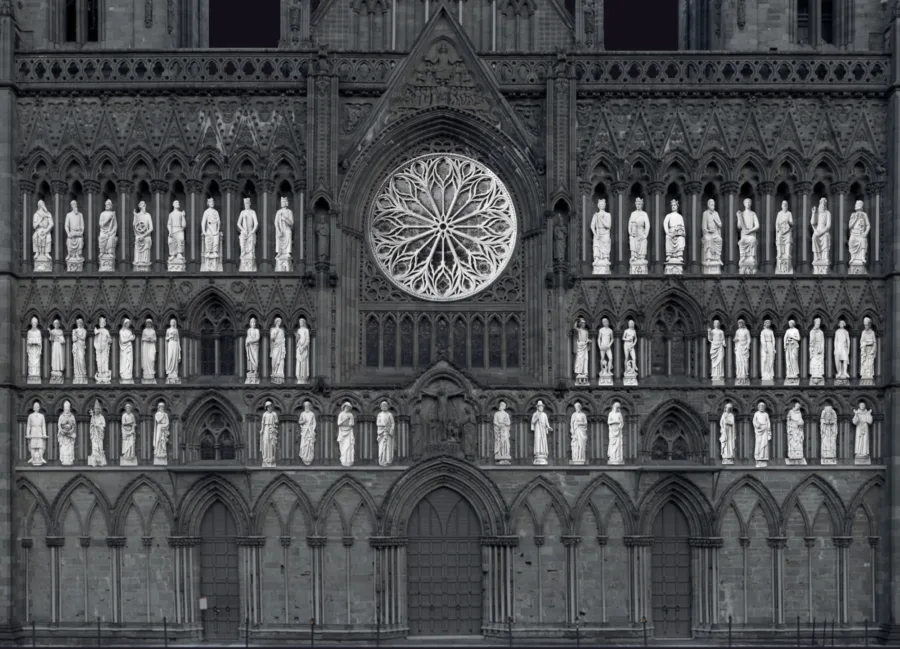St Francis of Assisi
St Francis of Assisi renounced wealth and dedicated his life to God and the poor.

Francesco Bernardone (1182–1226) came from a wealthy family in the Italian city of Assisi in Umbria.
He lived a carefree and dissolute life until a religious awakening in 1206 changed the entire course of his life. He started working for the poor and the sick, while he preached the Gospel.
He had many followers and established some simple rules for how they should live. These rules emphasised poverty and obedience. Franciscan preachers travelled from place to place dressed in robes of grey, undyed wool, with a rope belt and with sandals on their feet. In 1223, the movement was formally organised as the Ordo Fratrum Minorum (the Order of Friars Minor), known as the Franciscan order.
Francis Bernardone died in 1226 and was canonised two years later. The Franciscan order quickly spread far and wide, and a Franciscan monastery was established in Trondheim, probably circa 1300. This was destroyed in Trondheim’s great fire in 1531.
The statue
The statue depicts St Francis dressed in typical Greyfriars garb. It was originally called St Ansgar, Apostle of the North, but was renamed St Francis in 1945.
-
Feast day
4 October.
-
Attribute
Crucifix, skull, globe, orb, lily stalk.
-
Patron saint of
Italy, the poor, social work, environmental protection, ecologists, grocers, tailors, weavers, drapers, carpet traders, shipwrecked sailors, convicts, the lame and the blind, animals, and animal welfare organisations.
-
Invoked against
Headaches and plagues.
-
The sculpture
The statue was modelled by Nic. Schiøll and carved by Johannes Opdahl in 1944.

